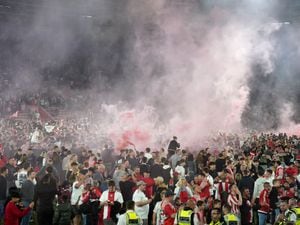How the 2011 riots came to the Black Country
August 9, 2011 – it was a date which will live in infamy. The police shooting of Mark Duggan five days before sparked mass riots across the country.

Starting in Tottenham, it spread like wildfire across cities and towns including Birmingham, West Bromwich and Wolverhampton.
In Wolverhampton the chaos started after 4pm. A violent mob descended on the city centre, leaving a trail of trashed shops and blazing vehicles. Innocent bystanders sought shelter in Wolverhampton’s pubs and fled for safety as the rioters hurled missiles and looted shops.
Meanwhile, less than 10 miles away in West Bromwich, a violent mob ripped bricks off walls and torched a catering van.



In the weeks and months that followed thousands of people were convicted, with more than 300 defendants appearing before the courts in the West Midlands.
In contrast to riots previously witnessed in England – such as the notorious 1981 Handsworth riots – the turmoil in 2011 was organised, at least in part, via social media.
Hooded youths descended on Wolverhampton, with the first sign of trouble coming when dozens of shoppers were locked inside the Asda supermarket near Molineux after a gang gathered in the car park at about 3pm. Shortly after there were reports of missiles being fired at Staveley Police Station in Whitmore Reans.
The focus of the trouble soon switched to the city centre with an unknown explosive released in Queen Square at about 4.30pm. By then about 300 youths had gathered near the Prince Albert statue, where they confronted police.



Dozens of the rioters fled down Dudley Street, vandalising shops including Burton’s menswear, T Mobile, Next and Marks & Spencer. Other splinter groups formed in Princess Street, Wheeler’s Fold, Wulfruna Street and King Street and hurled bottles at police officers who were wielding riot shields. In Lichfield Street, shoppers waiting for buses sought shelter in the Lady Wulfrun pub as another group threw missiles including bricks, bottles and stones.
Businesses and shops in Queen Street and Market Street suffered some of the worst damage. Windows were smashed and shutters torn. The shops were ransacked.
Digitech mobile phone shop, Zhapp clothing and EV Beckett jewellers were all devastated.
A lasting image of the day has come to be that of Louise Johnson, standing with arms outstretched, protecting her Queen Street hair salon from the gang. Her bold stance meant her salon came out unscathed. It was a show of defiance and order on a day otherwise characterised by bedlam.



When police arrived they sent the gangs scrambling towards the ring road and out of the city centre, signalling a shift in the balance of power as officers gradually seized control of the situation. Waitrose on the Penn Road closed its shutters with shoppers still inside as a precaution.
In West Bromwich the scenes of destruction were perhaps even more dramatic than they had been in Wolverhampton.
As in the neighbouring city, rumours of the pending trouble circulated via social media, prompting businesses to close their doors early. Families and shoppers abandoned the town centre. Lloyds TSB posted a sign outside stating: “Due to the country’s problems we have been advised to close.”
The shoppers were replaced by groups of youths, some believed to be aged as young as 11, dressed in dark hooded tops and jeans, with covered faces. In shocking scenes, hooded and masked men could be seen attempting to tip over a catering van, before it was torched. The town suffered a second wave of rioting around midnight. Looters got into Cash Converters and made off with laptops, iPads and iPhones.





